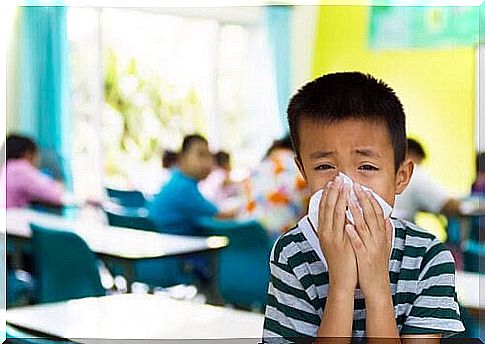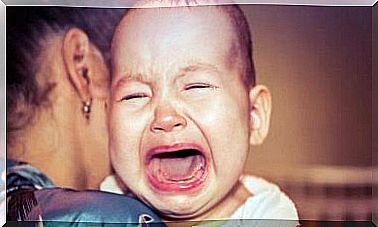7 Infectious Diseases Among School-age Children

When your children start school, it is common for them to contract several infectious diseases, some of which are even quite dangerous.
You can take specific measures to prevent these diseases. But you can often not avoid them completely because they spread very easily.
7 infectious diseases in school
The best way to take care of your child’s health is to know what these infectious diseases are and how to avoid spreading them. The most common are:
1. Measles
Measles is caused by a virus in the Paramyxovirus family . It affects the inner mouth, cheeks and palate. Over time, it can also affect other parts of the body, such as the face and neck.
Some of the symptoms are rash, fever, sore throat and white spots in the mouth. Sometimes it can also lead to muscle pain.
2. Stomach flu
This involves inflammation of the gastrointestinal tract. It especially affects the place where the stomach and small intestine meet.
Symptoms include diarrhea, vomiting, cramps and abdominal pain. If your child becomes infected, it is very important to give him or her enough fluids and a good diet.

Lice
It is very common for children to get head lice. They spread easily among children.
These parasites are annoying and can be troublesome for your children. They like clean hair best, but any child can get it. There are many products that can help you get rid of them quickly.
4. Eye inflammation
You can see that your child has an eye infection if she has yellowish, sticky eyes or if the lower part of the eyelid is red.
Eye inflammation spreads when an infection or other irritating substance inflames the transparent mucosa that covers the whites of the eyes and the inner eyelid. Some of the symptoms are that the eye looks swollen and it can feel like it is rubbing in the eye. You need antibiotics to treat it.
5. Chickenpox
Chickenpox ( varicella in Latin) is a disease characterized by skin rash and fever. The first symptoms that appear are blisters all over the body. Then the child gets itching, high fever, vomiting, nausea and loss of appetite. It is extremely contagious.
6. Bronchitis
Bronchitis occurs when the trachea (bronchi) becomes inflamed. The most common symptoms are difficulty breathing and constant coughing.
Your child may also experience other general symptoms and sometimes fever. Like chickenpox, bronchitis is highly contagious.
7. Mumps
Mumps is caused by a virus called paramyxovirus , which involves inflammation of the salivary glands.
It is usually spread through the air through coughing, sneezing, direct contact and even airborne shorter distances. This makes it one of the most contagious diseases.

How to prevent the most common infectious diseases among school-age children:
As I said, it is really difficult to prevent children from getting sick when they are constantly hanging out with so many other children.
But with a series of preventative measures, you can reduce the risk of this happening:
- Avoid having your child in contact with sick people and those you think are infected.
- Wash your baby’s hands often with soap and water. You can also use rubbing alcohol.
- Keep the school informed if your child has a contagious disease so that they can take the necessary action.
- Disinfect shared areas where your child spends a lot of time.
- Make sure that the spaces where the children stay are ventilated so that fresh air can enter.
- Make sure your child eats plenty of fruits, vegetables and other foods rich in vitamins.
These are just some of the common diseases that are common among school-age children.
Many of them are difficult to prevent. It is important to make sure that the child receives all their vaccinations and that you stay informed about what to do if your child becomes ill. Before worrying, consult your pediatrician.









